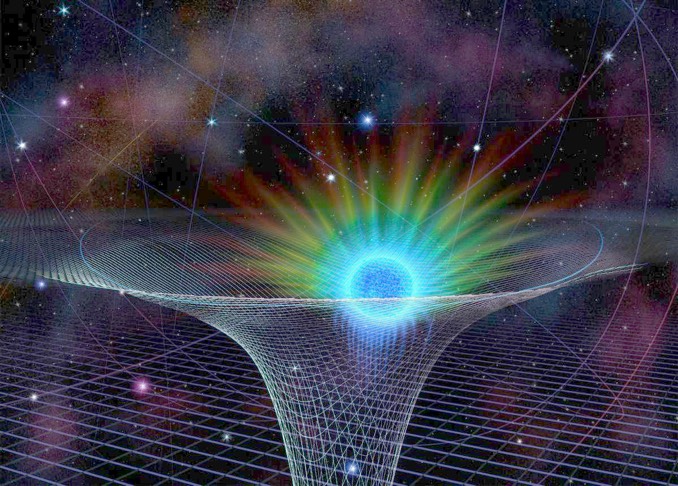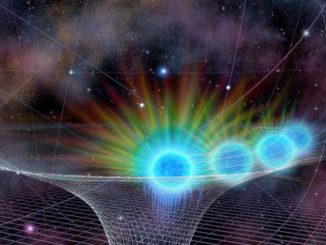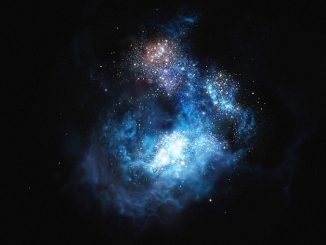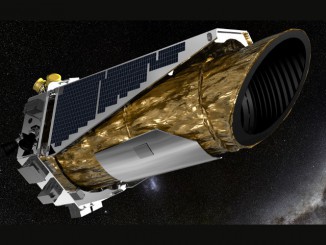
Observations of a star orbiting the 4-million-solar-mass black hole at the heart of the Milky Way show, once again, that Einstein’s theory of General Relativity correctly predicts the behaviour of light under the influence of extreme gravity.
A team led by Andrea Ghez, a professor of physics and astronomer at the University of California in Los Angeles, has been closely monitoring a star known as SO-2 (or S2) for more than two decades as it orbits the galaxy’s central black hole.
Spectra collected at the W.M. Keck Observatory in Hawaii, combined with images of the star as it moved through a complete 16-year elliptical orbit, allowed them to map out its trajectory in three dimensions. Knowing the orientation of the orbit with respect to the black hole enabled the team to determine the star’s radial velocity and properly interpret subtle changes in SO-2’s light.
Non-relativistic theories of gravity do not predict any changes to the light leaving the star as it orbits the black hole, speeding up as it passes close by and then slowing down as it moves away.
But Ghez’s team, incorporating SO-2’s known orbit, was able to precisely measure changes in wavelength, and thus colour, as the star raced through the low-point of its orbit and then slowed as it moved toward the far side of the ellipse. In agreement with Einstein’s predictions, the star’s light underwent a gravitational redshift as it passed near the black hole. Initial observations were published last summer by researchers using the European Southern Observatory, but Ghez opted to await additional data processing and analysis before posting her team’s results.
“What’s so special about S0-2 is we have its complete orbit in three dimensions,” said Ghez. “That’s what gives us the entry ticket into the tests of general relativity. We asked how gravity behaves near a supermassive black hole and whether Einstein’s theory is telling us the full story. Seeing stars go through their complete orbit provides the first opportunity to test fundamental physics using the motions of these stars.”
The results show “Einstein’s right, at least for now,” Ghez said in a release. “We can absolutely rule out Newton’s law of gravity.”
Richard Green, director of the U.S. National Science Foundation’s astronomy division, praised Ghez and her team’s persistence.
“Making a measurement of such fundamental importance has required years of patient observing, enabled by state-of-the-art technology,” Green said. “Through their rigorous efforts, Ghez and her collaborators have produced a high-significance validation of Einstein’s idea about strong gravity.”



